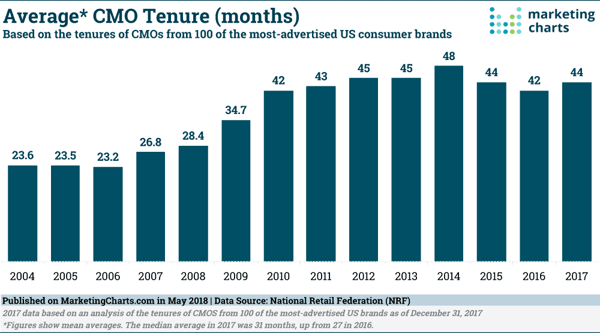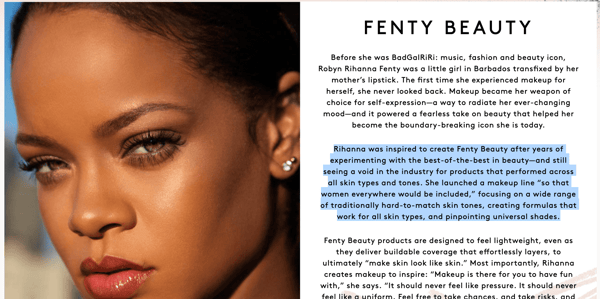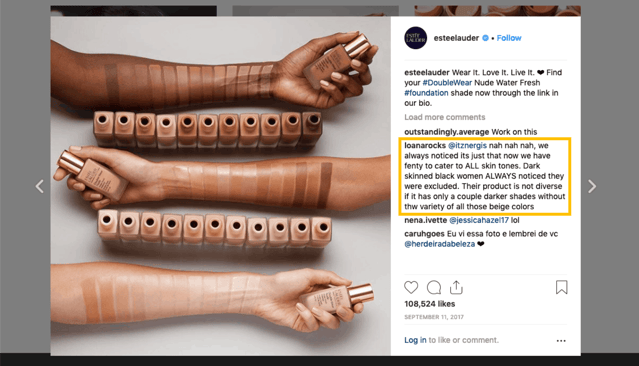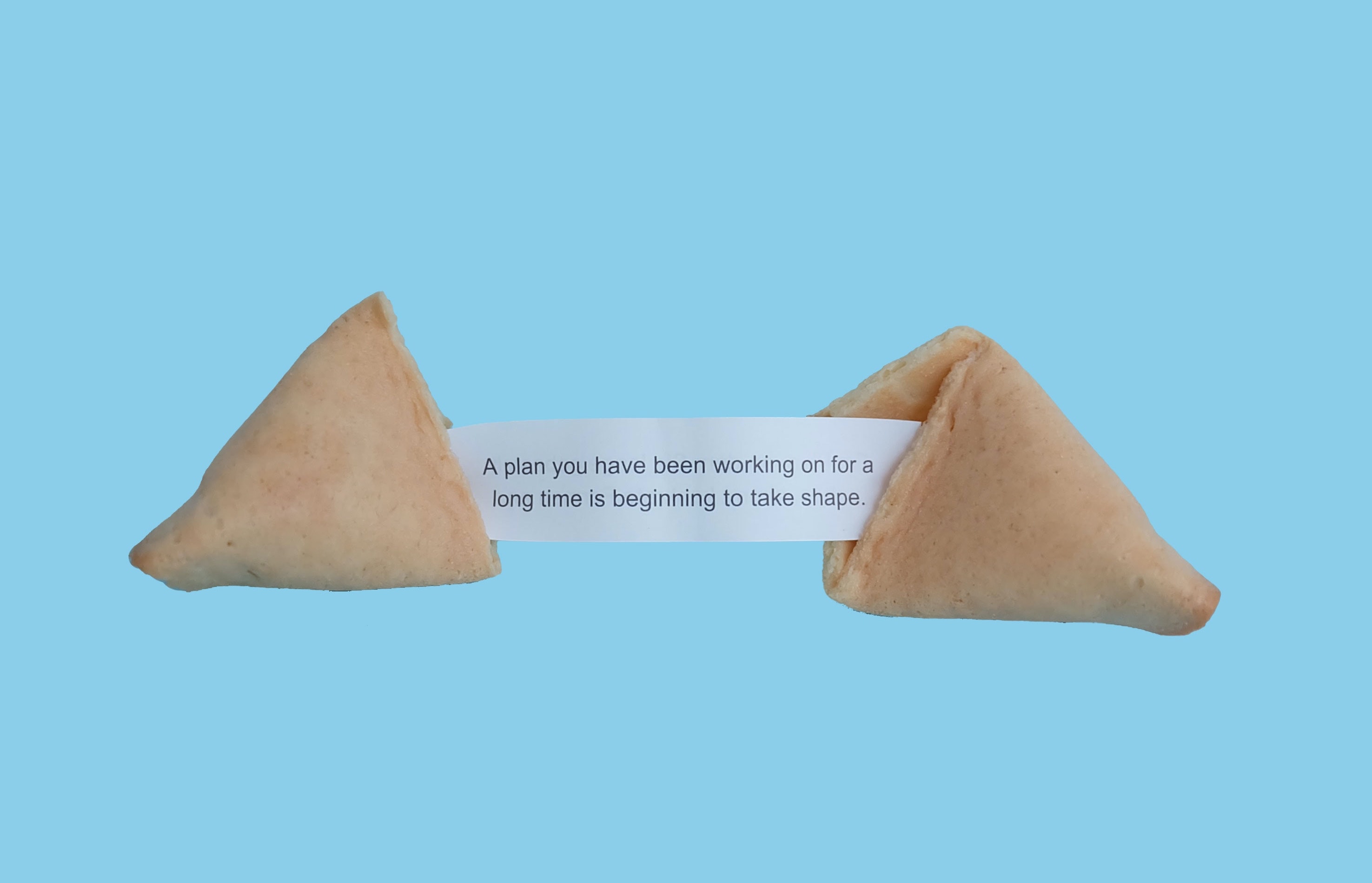What Should My Marketing Budget Be?
The amount a business should set aside for its marketing budget will vary based on its position in the market, its business goals, and the...

There used to be a saying that “nobody ever got fired for choosing IBM,” which meant that, groupthink, or doing the same thing your competitors were doing was safe. While the saying is dated, the mindset of maintaining the status quo to avoid the risk of failure is still prevalent.
For example, how many times have you been involved in a project or campaign where the only reason it exists was either that it’s what has been done each year or because competitor X just did it?
Additionally, the idea of safety is now relative when you consider the average CMO tenure is about 3.5 years.

Bottom line: you need to show results for your marketing and playing it safe could now be the riskiest thing you do.
Taking risks in your marketing isn’t as scary or careless as it may initially sound. For instance, when trying to grow market share, it’s important to be open to experimentation in your marketing. Whether it’s your messaging, channel selection, or diverting some of your budget to new areas, it’s critical to have a willingness to try new approaches, if you’re going to make significant gains in relation to your competition.
According to the 2019 BrandZ Top 100 Most Valuable Brands report, great customer experiences were cited as providing the most significant contribution to creating a meaningful difference.
The report goes on to explain that customer experience correlates strongly with innovation and brands that are perceived as both innovative and providing an exceptional customer experience grew more than twice as fast as those that were not.
Thinking differently about your marketing and taking calculated risks to be more innovative and improve the customer experience demands a different kind of approach. Not just in strategy, but in the attitude that precedes that strategy and the behavior that follows.
When you hear the term challenger brand, you might assume that it only applies to start-ups or category disrupters, like Uber or Warby Parker. However, taking on the role of the challenger in your marketing doesn’t require that you’re at the bottom of the pack in your market or that you’re a start-up.
Instead, it merely requires that you’re ambitious in your marketing. Not unrealistic in your goal setting, but rather that you’re prepared to be bold when you see opportunities to break through the clutter. It means that you’re committed to doing what’s best for your customers and brand, even if it means straying from what everyone else may be doing.
Andréa Mallard, the Chief Marketing Officer at Pinterest, described it well when asked by AdWeek: "Being a challenger is not a state of market, it’s a state of mind."
Saying you’re a challenger brand or have a challenger mentality is one thing, actually following through on it is something else entirely. You may need to instill a new mentality within your organization to build and nurture a challenger culture:
Think back to your high school science courses and put the scientific method to use in your marketing. Establish your hypothesis on what your experiment is trying to prove, how long it will last, what you will track and the definition of success. What are the if/then scenarios around your plan? In other words, if successful, what will this mean for your marketing moving forward?
Trying new things is risky, especially when money and jobs (e.g., yours) are involved, so it’s essential to ensure you are bringing every stakeholder along for the ride. Let them know what you’re testing, why you’re testing it, how you’ve set up the test, what your expectations are, and how you’re going to communicate the results.
It’s crucial to spend wisely if you're going to get the most out of your marketing. Understand where your budget is allocated and what you expect to get in return.
This may sound obvious in theory, but be honest with yourself: how much of your current marketing spend is on auto-pilot from year-to-year?
Importantly, the mantra of spending money like it’s your own, should not only apply internally, but also to your agency partners. Everything should be measured, and have a plan in place to optimize and reduce budget waste.
People love a challenger story, but it’s your responsibility to tell them what exactly you’re challenging.
For example, if you’re familiar with Fenty beauty products you’re probably aware that Rihanna founded it.
However, that’s not really what makes them unique.
After all, there are many singers, models, celebrities with makeup brands. What makes Fenty a challenger is their mission to democratize beauty products providing a wide range of options for everyone. This idea challenges an industry typically geared towards a narrow, stereotypical beautiful audience (e.g., slim, light-skinned women).
Their mission is to challenge the idea of who makeup is for.

For example, their introduction of foundation in 40 color shades not only received positive press and reactions from consumers, but also prompted legacy competitors like Estēe Lauder and Covergirl to expand their product lines and changed the industry as a whole.


Being loud in your marketing about the problem you see and how you’re trying to solve it helps people identify your brand as an ally and positions your competition as antiquated and part of the problem.
If you’re serious about trying to pick up market share from your competitors, you need to approach your marketing differently. To accomplish this, you must identify a clear problem your brand or product is trying to solve and have a plan along with the willingness to commit to it even if a bit of risk is involved.
Sign up for our monthly newsletter to receive updates.

The amount a business should set aside for its marketing budget will vary based on its position in the market, its business goals, and the...

Does any of the following sound familiar?

You know you need marketing help, but with so many options, choosing the right marketing agency for your business can seem daunting.